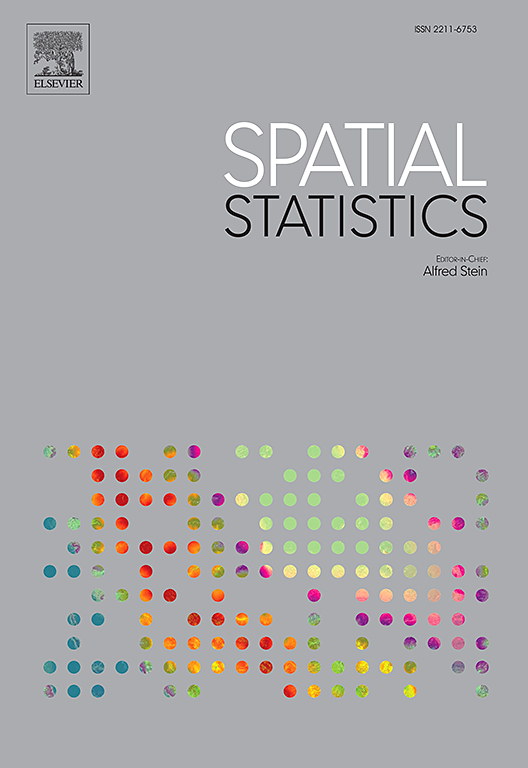Spatial robust fuzzy clustering of mixed data with electoral study
IF 2.5
2区 数学
Q3 GEOSCIENCES, MULTIDISCIPLINARY
引用次数: 0
Abstract
A robust fuzzy clustering model for data with mixed features and spatial constraints is proposed to analyze the turnout and the preferences of the voters at the provincial level in the European elections. The 2024 European elections in Italy were held in June to elect the 76 members of the European Parliament due to Italy. The clustering model accommodates various types of variables or attributes by integrating dissimilarity measures for each one through a weighting approach. This method produces a composite distance (or dissimilarity) metric that captures multiple attribute types. The weights are determined objectively during the optimization process and indicate the importance of each attribute type. The model also incorporates robustness via the introduction of a Noise cluster, and accounts for a spatial component. The application shows consistency of the results both at the level of units’ attributes and at a spatial level.
基于选举研究的混合数据空间鲁棒模糊聚类
提出了一种具有混合特征和空间约束数据的鲁棒模糊聚类模型,用于分析欧洲选举中省级选民的投票率和偏好。意大利于今年6月举行了2024年欧洲议会选举,选出了76名欧洲议会议员。聚类模型通过加权方法整合不同类型的变量或属性的不同度量,从而容纳不同类型的变量或属性。此方法生成捕获多个属性类型的复合距离(或不相似度)度量。权重是在优化过程中客观确定的,并表示各属性类型的重要程度。该模型还通过引入噪声聚类来整合鲁棒性,并考虑了空间分量。该应用程序显示了在单元属性级别和空间级别上结果的一致性。
本文章由计算机程序翻译,如有差异,请以英文原文为准。
求助全文
约1分钟内获得全文
求助全文
来源期刊

Spatial Statistics
GEOSCIENCES, MULTIDISCIPLINARY-MATHEMATICS, INTERDISCIPLINARY APPLICATIONS
CiteScore
4.00
自引率
21.70%
发文量
89
审稿时长
55 days
期刊介绍:
Spatial Statistics publishes articles on the theory and application of spatial and spatio-temporal statistics. It favours manuscripts that present theory generated by new applications, or in which new theory is applied to an important practical case. A purely theoretical study will only rarely be accepted. Pure case studies without methodological development are not acceptable for publication.
Spatial statistics concerns the quantitative analysis of spatial and spatio-temporal data, including their statistical dependencies, accuracy and uncertainties. Methodology for spatial statistics is typically found in probability theory, stochastic modelling and mathematical statistics as well as in information science. Spatial statistics is used in mapping, assessing spatial data quality, sampling design optimisation, modelling of dependence structures, and drawing of valid inference from a limited set of spatio-temporal data.
 求助内容:
求助内容: 应助结果提醒方式:
应助结果提醒方式:


